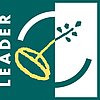What is LEADER?

LEADER is a funding measure co-financed by the EU for the development of rural regions with the involvement of the local population. LEADER is a French acronym (“Liaison entre actions de développement de l’économie rurale”) and means Links between actions for the development of the rural economy.
Until 2007, LEADER was an independent programme under Europe’s Common Agricultural Policy and was intended as a “development laboratory” for innovative and unconventional approaches to the self-management of rural regions in Europe. Due to its great success, which has been repeatedly confirmed by corresponding evaluations, LEADER was integrated into the programme for Rural Development in 2007, since when it has been continuously further developed.
The most important change in the current programme period for 2014-2020 are the funding budgets allocated to each region, which create independence for content on the one hand and greater responsibility on the other. The regional project selection committee decides on the award of LEADER funding in accordance with provincial and federal regulations.
Since 1994, the LEADER method has been developed in a total of four LEADER periods and consists of the following seven elements:
The territorial approach:
LEADER regions are defined, geographically coherent areas whose municipalities have bindingly undertaken to enter into a long-term partnership. They are based on the local and regional characteristics of the participating areas.
The partnership approach:
LEADER regions are managed by local public-private partnerships. Both local and regional politicians as well as the regional economy and civil society participate in these.
The bottom-up approach:
Bottom-up means that the strategies and projects are developed in the regions and are not set up by external planning agencies and organisations. This approach also ensures that the project selection committee has the power to take decisions – the project working group decides whether a project fulfils the regional development strategy and should be implemented within the scope of LEADER or not. However, the final funding decision is always taken by the granting authority (Department of Agricultural Funding, Ecoplus or AMA).
The multi-sectoral approach:
This means the cross-sectoral design and implementation of the strategy, which is based on the cooperation of players and projects from the various sectors of the local economy.
The innovative approach:
Trying new approaches – abandoning old ways. New ideas and projects should be taken up, developed and implemented for the region with creativity, imagination and a willingness to take risks.
Cooperation:
Development and implementation of national and international cooperation projects.

